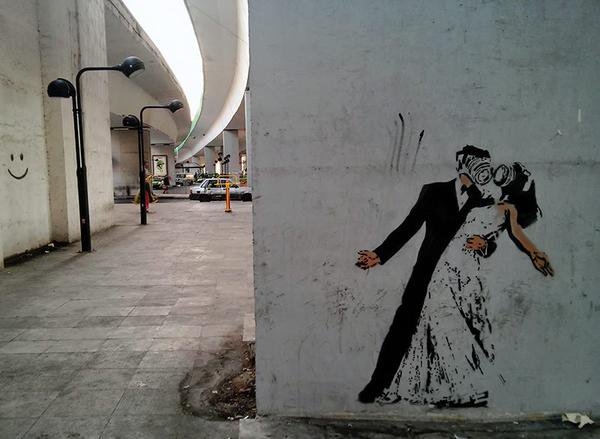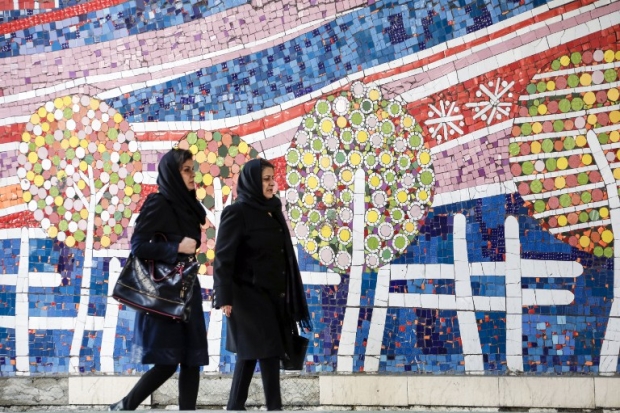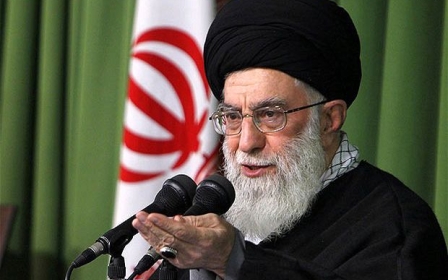The resilience of Iran's middle class

The Iranian Revolution was the result of a century of clashes between traditional and contemporary cultural systems, the religious and the secular, the despotic and the democratic.
A response to the extravagant corruption and egregious human rights violations of the Shah and his murderous secret police, the revolution in 1979 brought collapse to the Iranian monarchy.
If Iran ever finds itself at the beginning of a new age of freedom and expanded civil liberties, it will be because of the ability of the Iranian people from all places in society to adapt and thrive
With Ayatollah Khomeini and Islamic fundamentalism’s ascent to power came US-imposed sanctions that severed Iranian participation in the global market.
A ban on Iranian crude oil in the 1980s evolved into a total ban of all Iranian produced goods and an embargo on Western exports. In 1995, the Clinton administration furthered these measures, blacklisting businesses that invested more than $20m into the Iranian petroleum industry.
These sanctions had far-reaching consequences, touching every facet of Iranian life from bloated medical costs to frequent plane crashes as a result of the ban on aircraft sales that forced people to fly in planes still equipped with faulty parts dating back to the Pahlavi era. Many people lost their fortunes, businesses, and livelihoods.
Adapting and economising
During the era of sanctions, many complained that those in power used the restrictions to justify everything from human rights violations and state violence to cutting wages and imposing overly harsh punishments.
The Iranian middle classes managed to adapt. Unable to engage with foreign banks, they used Emirati and Turkish banks to conduct international business transactions. Once enjoying a high standard of living, they learned to economise. Iran’s black market offered goods unavailable through legal channels, and as the rial fell, Iranians invested in assets that would hold their value, such as gemstones and gold.
The eight-year war with Iraq killed over a million Iraqi and Iranian soldiers and civilians, and further pummeled Iran’s economy and morale.
My working class Iranian family experienced the same desolating effect of revolution, sanctions and war as many other Iranian families did.
Some argue that the Iranian middle class has been largely unsuccessful in cementing any real political reform toward creating democratic freedoms, but most Middle Eastern countries plagued by political and economic instability are unable to nurture any organic democratic processes, and Iran is no exception.
Nevertheless, over the years, Iranians have grown more creative in responding to the problems plaguing their country. Through social expression, Iranians manage to negotiate civil liberties in a fundamentalist Islamic landscape.
Creative backlash
By forming social movements, Iranians remain independent of political impositions placed on them by both Iranian and US regimes. The refusal of Iranian women to wear hijab, the traditional Muslim headscarf that covers the hair and is meant to show piety and modesty, is a prime example.
Over the years, Iranians have grown more creative in responding to the problems plaguing their country
Many Iranian women insist that hijab should be a choice and not a political mandate, and this campaign is gaining traction. In the late 1970s, after the Iranian revolution, thousands of middle-class Iranian women protested the mandatory hijab laws in the streets of Tehran, and this spirit is still very much alive today.
Today, thousands of women risk their lives by removing their hijabs in defiance to what they perceive as oppression. The “My Stealthy Freedom” campaign encourages women to post pictures of hijab-free hair onto social media, and even has Iranian men wearing the hijab in solidarity.
In 2015, the Iranian moral police, the Ershad, seized the cars of some 40,000 women for hijab-related infractions in the interest of “upholding religious conservatism”.
The black chador - the long, full-body garment worn by Muslim women, covering the hair and obscuring the shape of the body, has been replaced by vibrant and colourful headscarfs. These are often worn loose fitting and showing hair, something the more traditional codes do not allow for. Some Iranian female activists refuse to wear the hijab at all whenever possible.
The tendency to use technology for social reform should not come as a surprise after the Green Movement of 2009, which was largely led online. Iranians commonly use many of the same platforms as people in the US and Europe.
Waze, the Google-owned navigational app than began as an Israeli startup, was blocked in recent days by Israel-fearing government elites after it gained popularity among the population.
Iranians are up to date with all of the same tools that allow for greater cultural participation found in any Western city and readily adopt trends in technology, social media, fashion, music and food.
Iran already has one of the richest art traditions the world, spanning many spheres, from literature to architecture, music and calligraphy to sculpture. Despite menacing censorship, thousands of artists, musicians, poets, sculptors and writers have turned their expression into a social phenomenon of resistance.
Thriving spirit
With the lifting of Iranian sanctions by President Obama in 2015, some have expressed optimism regarding Iran’s reemergence into various sectors of the global market, while others are more guarded, anticipating disappointment from potential corruption that could impede any lasting benefit to the Iranian people.
The creative Iranian soul and will of many of its people clearly does not match the tone of its governing bodies
In January, President Rouhani remarked that any efforts by the Trump administration to reverse the multilateral deal would be like turning “a shirt back to cotton”.
Iran holds some of the largest oil and gas reserves in the world, and if the regime’s intention is indeed to bring stability to its citizens as it claims, investment into industry and education will be among its top priorities in a post-sanctions era.
The will of a people determines the personal and social freedoms it enjoys irrespective of political mandates or sanctions. If Iran ever finds itself at the beginning of a new age of freedom and expanded civil liberties, it will be because of the ability of the Iranian people from all places in society to adapt and thrive after catastrophe, and their determination to charter their own course.
- Amirah Masnavi has worked on several continents in several spheres, including teaching women in Saudi Arabia and consulting for UNESCO in France. She holds a BA in Political Science from the University of Southern California and a Masters in Middle Eastern and Islamic Studies from the American University of Paris.
The views expressed in this article belong to the author and do not necessarily reflect the editorial policy of Middle East Eye.
Photo: Supporters of Iran's defeated presidential candidate Mir Hossein Mousavi dressed in black during a mass protest on 18 June 2009 in Tehran as a mark of mourning for demonstrators killed in clashes during previous protests, which have been banned by the authorities (AFP)
New MEE newsletter: Jerusalem Dispatch
Sign up to get the latest insights and analysis on Israel-Palestine, alongside Turkey Unpacked and other MEE newsletters
Middle East Eye delivers independent and unrivalled coverage and analysis of the Middle East, North Africa and beyond. To learn more about republishing this content and the associated fees, please fill out this form. More about MEE can be found here.







